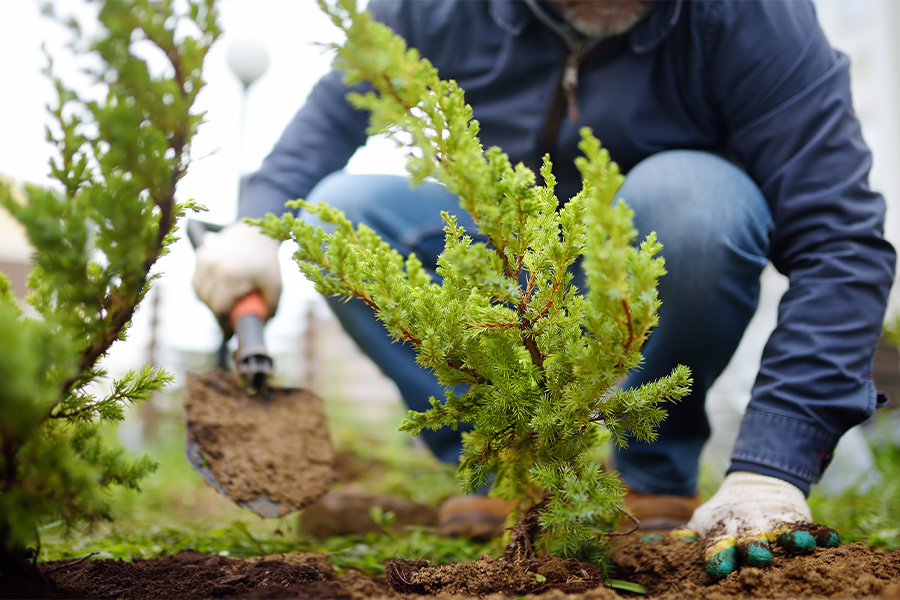Drought-Tolerant Plants
-

C 956
Junipers
This resource provides information about variety selection, characteristics, required care, and disease and pest control for juniper plants.
Bob Westerfield
|
-

Chaste tree (genus Vitex) is an ornamental with many desirable qualities for the urban landscape. It is a deciduous shrub to small tree proffering violet flowers, which are a magnet for pollinators, fragrant foliage, and excellent drought and deer tolerance. It’s not surprising that it has been touted as one of the best plants for Georgia gardens.
There is always room for improvement on what nature provided, so the breeding team at the University of Georgia Department of Horticulture has spent years working to improve on this valuable ornamental, and they are ready to offer several great new plants: ‘Daytona Heat Danica Pink,’ ‘Daytona Heat Dale White,’ ‘Daytona HeatTM Petty Blue,’ ‘Pink Pinnacles,’ and ‘Little Madame.’ This publication highlights the features of these chaste trees.
Carol Robacker, David A. Knauft, and Bodie V. Pennisi
|
-

C 1081
New Native Little Bluestems
Little Bluestem (Schizachyrium scoparium) is a drought tolerant, low maintenance native plant. This ornamental, warm season perennial grass tolerates a wide range of soil conditions and is easily grown. Its purplish bronze blooms and vertical clusters of slender leaves make it a lovely addition to any landscape. It is cold hardy in Georgia, although it may suffer moderate damage in cold winters in the North Georgia mountains. Dr. Carol Robacker of the University of Georgia and Dr. Melanie Harrison of the United States Department of Agriculture have recently created new Little Bluestem cultivars with improved form, reduced height, and more intense red or blue foliage. Several of these desirable new plants are now available to the landscape industry and the public!
Carol Robacker and Bodie V. Pennisi
|
-

New ornamentals have long been considered the lifeblood of the green industry. This publication contains recommendations for best-performing new annuals based on research conducted at the Trial Gardens at the University of Georgia, showcasing the plants that were awarded Classic City Awards in 2020.
John M. Ruter, Bodie V. Pennisi, and Brandon C Coker
|
-

A landscape designed, installed and managed according to Xeriscaping’s seven steps uses up to 50% less water than a traditional landscape. And, a well-designed water-wise is just as attractive as a traditional landscape.
Rose Mary Seymour and Sheri Dorn
|
-

Planting ornamental plants correctly increases their survivability and performance in the landscape, and it helps them develop a vigorous, healthy root system that increases their drought tolerance during periods of limited rainfall. This pubication provides research-based guidelines for proper planting.
Sheri Dorn
|
-

Water-wise landscapes not only save water, they save time by requiring less routine care than most traditional landscapes. This publication offers guidelines to help you achieve these goals and conserve water when managing your landscape.
Sheri Dorn
|
-

A water smart landscape is more than just water-efficient. It’s a landscape that has been carefully designed, properly installed and managed to reduce pollution, improve conservation and ensure year-round beauty.
L. Mark Risse, Rose Mary Seymour, and Sheryl Wells
|